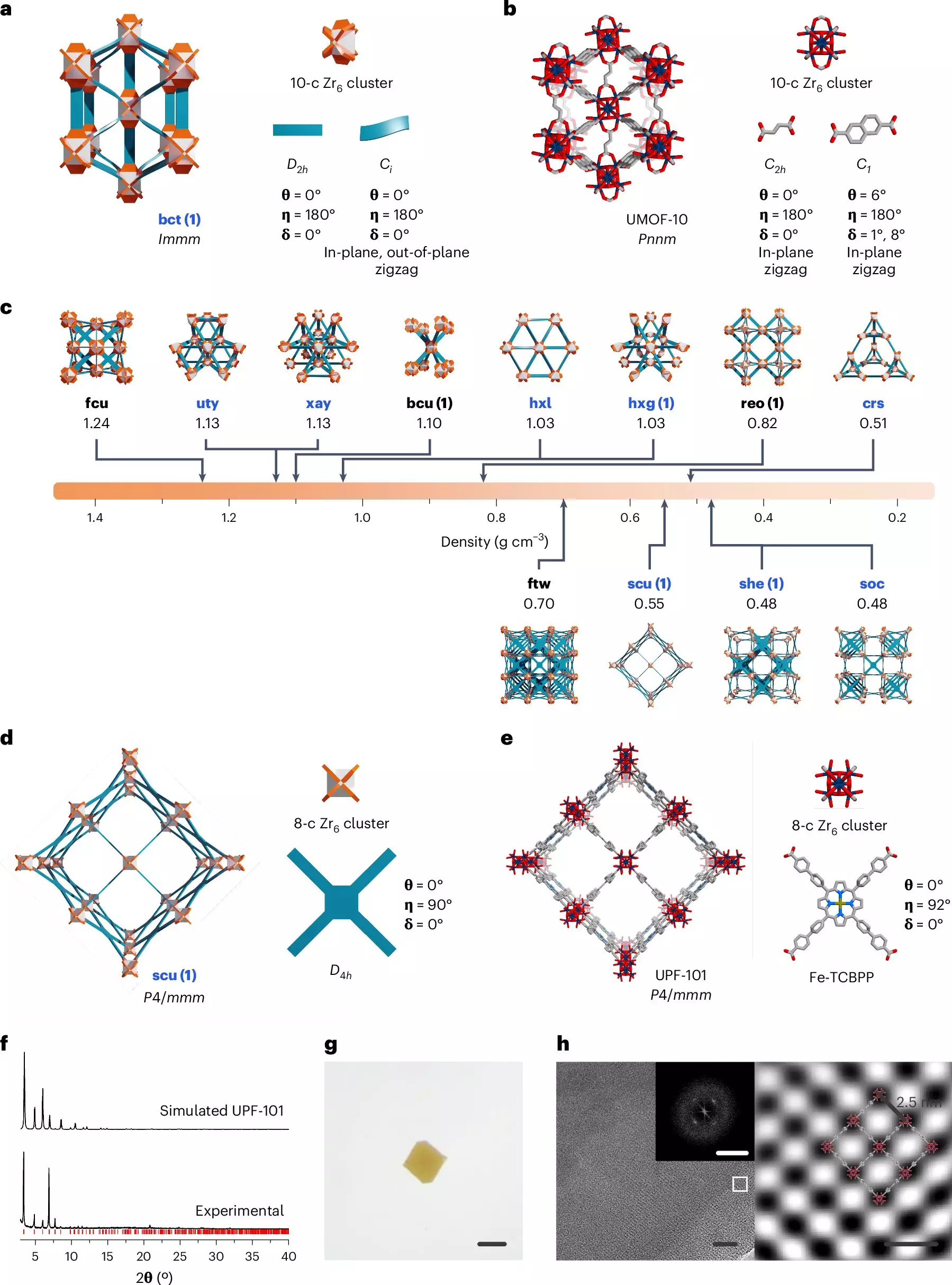Metal-organic frameworks (MOFs) are gaining recognition for their diverse applications in fields such as carbon dioxide capture, storage, and catalysis. In a recent study published in the journal Nature Synthesis, Professor Wonyoung Choe and his research team at Ulsan National Institute of Science and Technology (UNIST) in South Korea introduced a groundbreaking strategy known as the “Up-Down Approach” to design MOFs. This innovative method has the potential to revolutionize the process of creating MOFs by merging traditional bottom-up and top-down approaches.
The Up-Down Approach combines the best of both worlds by expanding the exploration of structures based on metal clusters before selecting suitable organic ligands. This approach overcomes the limitations of conventional methodologies, which often rely on predefined components and structural restrictions. By enabling the synthesis of new combinations of elements, the Up-Down Approach opens up possibilities for discovering novel MOF structures that were previously inaccessible.
Through the application of the Up-Down Approach, the research team identified 26 new zirconium-based MOFs known for their high chemical stability. Notably, they successfully synthesized two of these novel structures, showcasing the effectiveness of this innovative strategy. In addition, the team utilized a “Ribbon Representation” to visualize the geometric features of organic ligands, improving the precision and efficiency of the design process.
Lead author Jiyeon Kim emphasized that the Up-Down Approach serves as a powerful tool for rapidly exploring and developing new materials with diverse chemical properties. Co-first author Dongsik Nam highlighted the far-reaching impact of this research, stating that it paves the way for the discovery of innovative materials applicable across various sectors, including catalysis, gas storage, and environmental remediation. Professor Wonyoung Choe concluded by emphasizing the significant advancement made in expanding the chemical space of MOFs and broadening their potential applications.
The Up-Down Approach represents a paradigm shift in the design of metal-organic frameworks, offering a versatile and efficient method for creating tailored materials with unique properties. This research demonstrates the importance of innovative strategies in pushing the boundaries of material science and opening up new avenues for exploration and discovery.


Leave a Reply